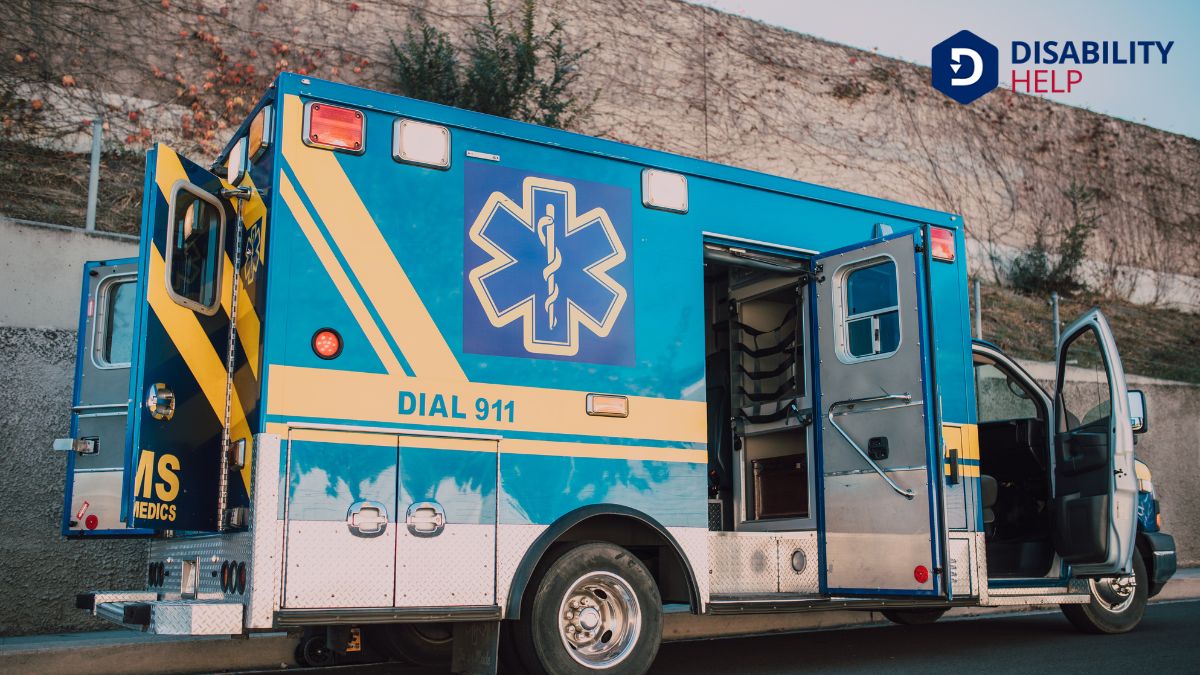When it comes to MedicaidA U.S. government program that provides health coverage to eligible low-income individuals, includin... and non-emergency medical transportation (NEMT), the rules can be a bit tricky. Each state sets its own guidelines, and that means the requirement for pre-approval can vary widely. Some states might insist on pre-approval for all NEMT trips, while others only need it in certain situations. So, how do we navigate these complexities to guarantee seamless access to essential medical appointments? Let's explore what you need to know.
Key Takeaways
- Medicaid transportation policies and pre-approval requirements vary significantly by state.
- Some states require pre-approval for all non-emergency transportation services.
- Pre-approval may be needed for trips related to covered medical services.
- Documentation from a healthcare provider might be necessary for pre-approval.
- Checking with your state Medicaid office is essential for understanding specific requirements.
Understanding Medicaid's Non-Emergency Transportation Services

Maneuvering through Medicaid's non-emergency transportation services can seem intimidating at first, but understanding their purpose helps. These services exist to guarantee beneficiaries reach healthcare appointments without financial strain.
By focusing on accessibilityThe design of products, devices, services, or environments to be usable by people with disabilities...., Medicaid supports those who might otherwise face barriers to necessary care.
We should recognize that each state manages its own Medicaid program, which means transportation services might vary. Generally, these services cover rides to doctors, pharmacies, and therapy sessions.
We often find that prior approval is needed, so it's essential to contact our state's Medicaid office to get specific details.
The Importance of Non-Emergency Medical Transport for Beneficiaries
Let's explore how non-emergency medical transport plays a critical role in ensuring beneficiaries can access necessary medical appointments.
By reducing transportation barriers, we help individuals maintain their health and well-being without the stress of finding a way to get to their appointments.
Together, we can make sure everyone has the support they need to receive timely medical care.
Accessibility for Medical Appointments
When accessing healthcare services, reliable non-emergency medical transport (NEMT) is crucial for Medicaid beneficiaries.
We often face challenges in getting to our medical appointments, which can jeopardize our health. NEMT guarantees we don't miss critical check-ups or treatments due to transportation issues. It's not just about getting from point A to point B; it's about accessible healthcare for all of us.
Think about it: without dependable transportation, how would we maintain our health? NEMT bridges that gap, making certain we reach our doctors on time.
For many, this service is a lifeline, particularly for those living in areas with limited public transport options. By using NEMT, we're empowered to prioritize our health without worrying about the journey.
Reducing Transportation Barriers
Reliable transportation is more than a convenience; it's a significant component of healthcare accessibility. It's understood that for many Medicaid beneficiaries, getting to medical appointments is challenging. Without reliable transport, missed appointments can lead to worsening health conditions. That's why reducing transportation barriers is essential.
By ensuring Medicaid provides non-emergency medical transportation (NEMT), we can promote better health outcomes.
Let's consider how important NEMT is. It helps those without access to a vehicle or public transport reach necessary healthcare services. Whether it's regular check-ups, therapy sessions, or specialist visits, timely access can prevent minor issues from escalating.
We all benefit when the system supports our health needs, and effective transportation options are a fundamental part of that support.
State Variations in Medicaid Transportation Policies
As we explore state variations in Medicaid transportation policies, we need to take into account how each state sets its own coverage rules and pre-approval requirements.
Some states may offer broader transportation coverage, while others have stricter guidelines.
It's important for us to understand these differences, so we can better navigate the system and guarantee beneficiaries get the services they need.
State-Specific Coverage Rules
Medicaid's transportation policies can vary considerably from state to state, with each setting its own rules regarding coverage for non-emergency medical transportation (NEMT).
As we explore these state-specific coverage rules, it's important to recognize that some states may offer extensive NEMT services, while others have more limited options. For instance, certain states might provide transportation for a broader range of medical appointments, whereas others could restrict it to specific types of care.
We should also consider that eligibility criteria can differ, impacting who can access these services. Some states may require proof of need, while others may automatically cover eligible Medicaid recipients.
Understanding the specific rules in our state can help us navigate our options and guarantee access to essential healthcare transportation.
Pre-Approval Requirement Differences
Understanding state-specific coverage rules is just the beginning when it comes to managing Medicaid's transportation policies. Each state has its own approach to pre-approval requirements for non-emergency medical transportation (NEMT). Some states require us to get approval in advance, while others offer more flexibility.
For instance, in certain states, pre-approval might be mandatory for all NEMT trips, while others might only require it for specific destinations or services.
Navigating these variations can be tricky, but being informed helps us guarantee we're meeting the requirements effectively. It's vital to check with our state's Medicaid office or transportation provider to understand the specific pre-approval process.
Staying informed empowers us to access the necessary transportation services without unnecessary delays or denials.
Criteria for Pre-Approval of Non-Emergency Transportation
Before we plunge into the criteria for pre-approving non-emergency transportation under Medicaid, it's vital to know that the process is designed to guarantee beneficiaries can access necessary medical services.
We must meet specific criteria to qualify for this service. First, the transportation must be essential for attending a Medicaid-covered medical appointment. The patient must also have no other means of transportation available.
Additionally, the request should be related to a covered medical service that can't be missed without negatively impacting health. In some cases, documentation from a healthcare provider may be necessary to justify the need.
Understanding these criteria guarantees we're prepared to meet Medicaid's standards, allowing us to focus on our health without worrying about how to get there.
How to Request Pre-Approval for Transportation Services
Now that we comprehend the criteria for pre-approval of non-emergency transportation, let's focus on how to request this service.
First, we need to contact our Medicaid provider or the designated transportation service directly. Most states require us to call a specific number or fill out an online form.
We'll need our Medicaid ID, the details of our medical appointment, and the requested transportation dates and times.
It's essential to make the request well in advance, typically at least 48 hours before the appointment. Some programs might've different requirements, so checking with our provider is wise.
After submission, we'll receive confirmation if approved. If additional documentation is necessary, make sure we provide it promptly to avoid delays in approval.
Common Challenges in Securing Transportation Approvals
While maneuvering through the process of securing transportation approvals, we often encounter several common challenges.
First, understanding the eligibility criteria can be confusing. Medicaid's guidelines vary by state, and it's essential to know what's covered and what's not.
We might also face delays in response times from Medicaid offices. These delays can impact our ability to schedule appointments and services on time.
Additionally, documentation requirements can be extensive. Gathering the correct paperwork, like doctor's notes or appointment confirmations, can feel overwhelming.
Sometimes, the lack of communication between healthcare providers and transportation services leads to miscommunications.
Finally, language barriers can hinder clear understanding.
Navigating these obstacles requires patience and persistence, but knowing we're not alone can offer a bit of reassurance.
Tips for Ensuring Smooth Transportation Experiences
To guarantee smooth transportation experiences, we must start by thoroughly understanding the specific guidelines and requirements of our state's Medicaid program.
Familiarize ourselves with the documentation needed and the process for scheduling rides. It's essential to plan ahead, allowing ample time to submit requests and receive confirmation.
When booking, we should double-check appointment details, verifying accurate pickup and drop-off times.
Maintaining open communication with our transportation provider is key; if there are any changes or cancellations, notify them promptly to avoid disruptions.
Keeping a personal record of all booked rides, including dates and times, can help track our appointments.
Resources for Further Assistance and Guidance

Accessing the right resources can make managing Medicaid's non-emergency transportation requirements much easier.
We can start by reaching out to our state's Medicaid office for specific guidance since each state may have different regulations. They often provide essential forms, contact information, and other helpful materials.
Another valuable resource is the Medicaid.gov website, which offers extensive information and support tools. For personalized assistance, we can contact Medicaid's beneficiary services or the transportation coordinator listed on our Medicaid card.
Online forums and local community organizations are also great places to connect with others who've navigated this process.
Let's not forget our healthcare providers; they often have insights into the transportation services we might need. By using these resources, we're better equipped to manage our transportation needs.
Conclusion
In traversing Medicaid's non-emergency transportation services, we must be proactive and informed. Each state's policies differ, so let's ascertain we understand the specific requirements and pre-approval criteria applicable to us. By staying organized and reaching out to our state Medicaid office for guidance, we can prevent delays and access essential medical appointments. Remember, we're not alone in this; there are resources available to help us secure the transportation we need for our well-being.






